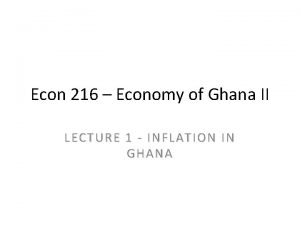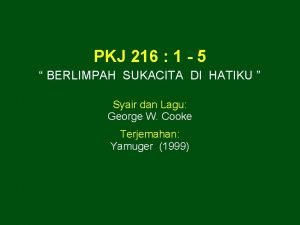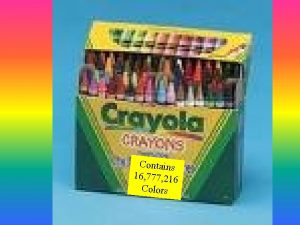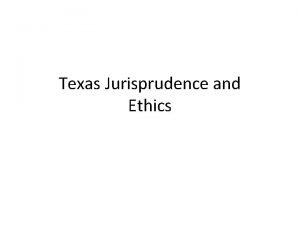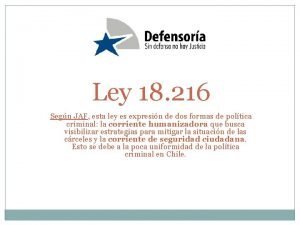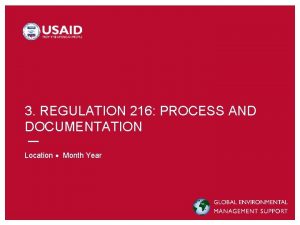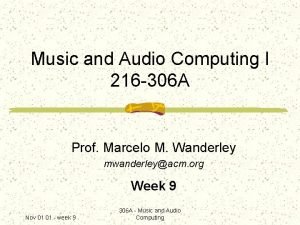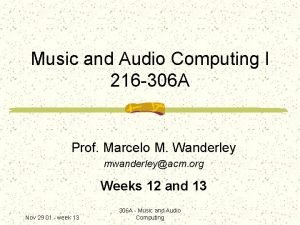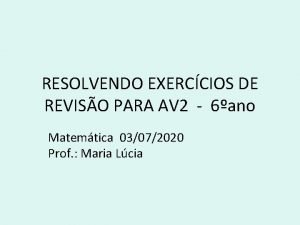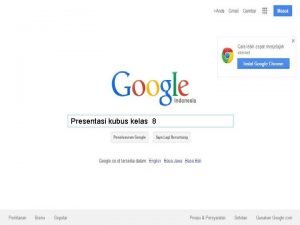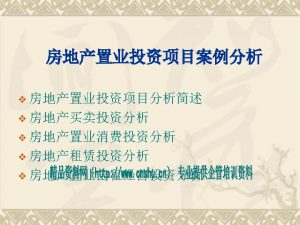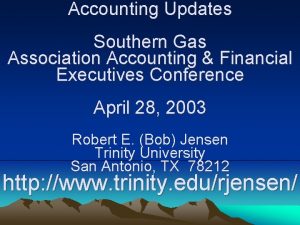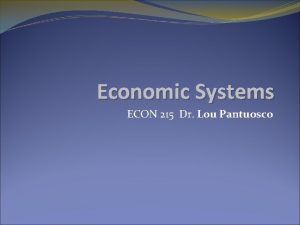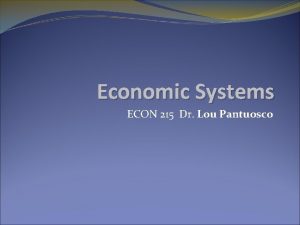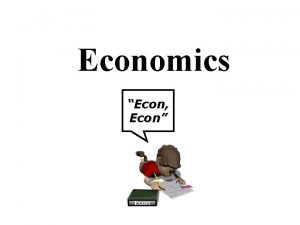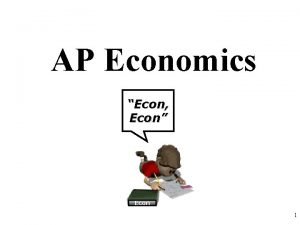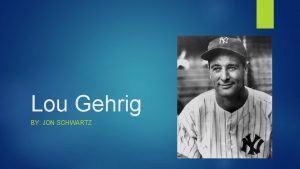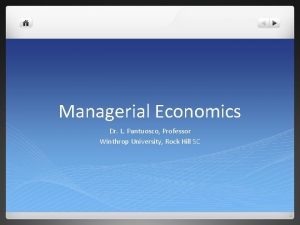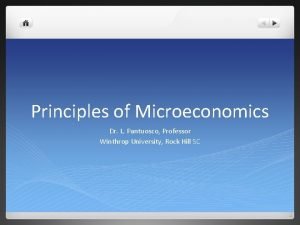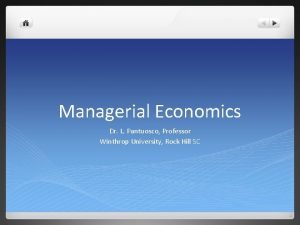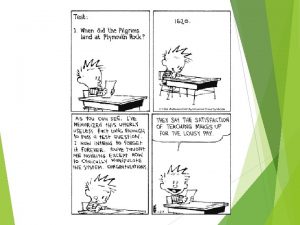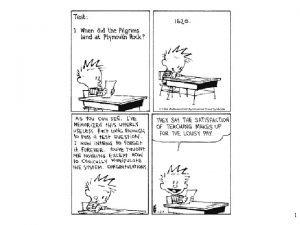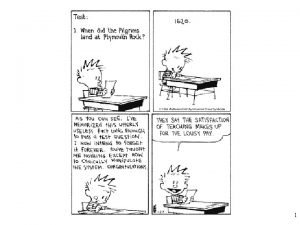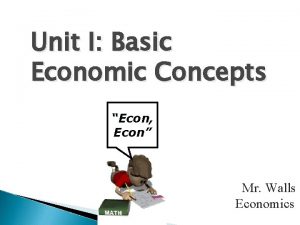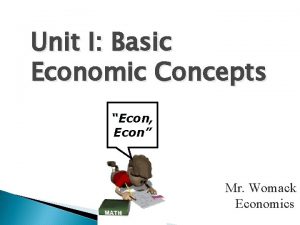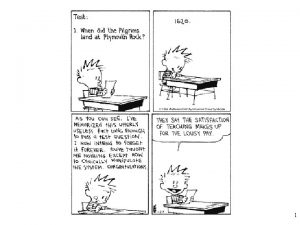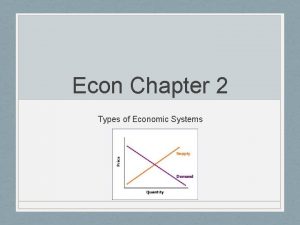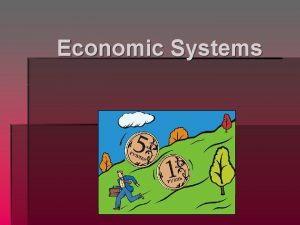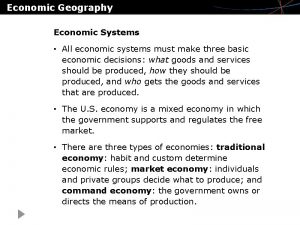Economic Systems ECON 216 Dr Lou Pantuosco The































- Slides: 31

Economic Systems ECON 216 Dr. Lou Pantuosco

The Macro picture What is an economy? The large set of inter related economic production and consumption activities which aid in determining how scarce resources are allocated. What is economics? The allocation of scarce resources among competing uses. What are the resources that are considered scarce? Land, labor, capital and entrepreneurial ability

Types of Economic Systems North Korea choose to spend 33% of GDP on military! Canada spends 1% of their GDP on military! The question that each economy faces is whether they want prices, quantities, distribution of goods and services, and distribution of income to be determined by the private sector or the public sector. Private sector – made up of consumers and businesses. Public sector is the government. There are different levels of government : local, state and federal. Some services are produced by both private and public agencies such as education, trash collection, and security. The general groups in the domestic economy are consumers, businesses, and government.

Economic Development from above

The Earth at Night

Types of Economies • Who makes the decisions? Traditional System decisions are made by the elders Command System decisions are made by central government Communist Socialism Market Economy decisions are made by individuals Mixed Economy individuals make some decisions the central authority make some decisions

US Government spending the U. S. is a MIXED ECONOMY http: //www. usgovernmentspending. com/

Foundational Tenets of Capitalism Addressing the Issues of Resource Ownership Property Rights Free Trade The Five Foundation Questions

Resource Ownership • Who owns the property? Communism communal ownership Socialism government ownership Capitalism private ownership

Property Rights are a key component of each economic system The definition, allocation, and protection of property rights comprise one of the most complex and difficult sets of issues that any society has to resolve, but one that must be resolved in some fashion. For the most part, social critics of “property” rights do not want to abolish those rights. Rather, they want to transfer them from private ownership to government ownership. Some transfers to public ownership (or control, which is similar) make an economy more effective. Others make it less effective. The worst outcome by far occurs when property rights really are abolished. The Tragedy of the Commons is an example of the value of property rights.

Trade Options in a Capitalistic Economy Another key component is each country’s policy regarding trade. Free Trade - The theory of comparative advantage supports the concepts of specialization and exchange Fair Trade – evaluates trade policies between countries to insure a level playing field. Protectionism – isolates a country in a world economy. The objective is to protect domestic jobs.

The impact of trade on consumer prices Prices will differ in each of the trade approaches. Free trade – low prices, products made in low wage/ high productivity plants Fair trade – price most likely higher, government subsidies will be offset by tariffs or taxes placed on foreign goods Protection – higher prices, more American jobs

Within the developed countries there is a progression towards specialization and exchange. • Specialization each person concentrates on a limited number of tasks or activities • Exchange trading with others to obtain our desires

Theory of Comparative Advantage This theory has worldwide implications, because some countries have sectors that have to sacrifice for the good of the world i. e. US television or apparel producers. This theory also promotes world trade. An absolute advantage is the ability to produce a good or service using fewer resources than other producer’s use. Those who make economic decisions must decide how to allocate the resources within the economy (land, labor, capital, entrepreneurial spirit).

Theory of Comparative Advantage • A basic tenet of free trade • Theory of Comparative Advantage claims that the country (economy) with the relatively lower opportunity cost should produce the goods. • For example: The US can produce corn for $100 per ton, and televisions for $25 per set. Japan can produce corn for $200 per ton, and televisions for $15 per set. What should each country produce? The US can produce corn for $100 per ton, and televisions for $10 per set. Japan can produce corn for $200 per ton, and televisions for $15 per set. What should each country produce? The US can produce corn for $100 per ton, and televisions for $5 per set. Japan can produce corn for $200 per ton, and televisions for $15 per set. What should each country produce?

Theory of Comparative Advantage Output Per Worker Week You may be used to seeing theory of Comparative Advantage using output per worker per week. One worker in one week can produce Corn (bushels) Televisions (sets) Japan 50 6 US 100 5

Resource Allocation • Basic Economic Questions We will answer the following five questions from a “market economy/ capitalist” perspective. 1. 2. 3. 4. 5. How much should the economy produce? What should be produced? How should the output be produced? Who should receive the output that is produced? Can the system adapt to change?

1. How much should the economy produce? It depends on their resources. A given economy can only produce as much as their resources allow them to. At this point Mexico can not produce as much as the US.

1. How much should the economy produce? • The Production Possibility Frontier medicine 200 150 100 50 0 tanks 0 50 75 90 100 Combination A Combination B Combination C Combination D Combination E 1. Graph the combinations. 2. Starting at 150 combination B, in terms of tanks, how many tanks does it cost the government to purchase 50 units of medicine? 3. If the government becomes better at producing both medicine and tanks, what will happen to the production possibility frontier? 4. If the government becomes better at producing tanks, but not medicine what happens to the production possibility frontier? 5. How will it be shown of the PPF, if the government has to use some of their money to pay the interest on their debt, or uses their money inefficiently?

The efficient way to allocate resources. PPF Explained Econ 12 100 9 95 6 90 3 70 1 50 F D C B A 0 3 6 9 12 Physics A student has 12 hours a week to dedicate to studying for Econ and Physics. How should he/she allocate their time? What lessons do we learn from the PPF? How can the student earn two As? How can the student earn two Fs? What if the physics instructor is very difficult? The class is a lot more difficult than expected? What is the econ teacher is a lot easier than expected?

2. What should be produced? Leave it up to the individuals in society. Let the demand of the consumers determine what should be supplied. Adam Smith, the founder of economics, referred to the above philosophy as the "invisible hand".

3. How should the output be produced? Internationally, the country that should produce the goods or services is the one(s) with the relatively lower opportunity cost (this is known as Theory of Comparative Advantage) Within a given country, the companies that produce the goods are the ones that are the most profitable and efficient. (Survival of the fittest)

4. Who should receive the output that is produced?

Income Growth by Quintile

4. Who should receive the output that is produced? In the United States, the goods and services produced are distributed to those who can pay for them. In Europe there is more government involvement to keep incomes closer between classes. The Closer the dots the more evenly distributed the income.

Income Distribution in Europe

5. Can the system adapt to change? How have cars changed in the past ten years? How have clothes changed in the last decade? Changing structure of the American economy.

What we wear, how we listen to music

What we drive and how we communicate on the phone, all adapt to changes in preferences and technology!

Flaws of each system . . Should everyone be paid the same? If the government becomes too strong who will they be accountable to? If the rich become too wealthy will class warfare result? “The average life span of the world’s greatest civilizations has been 200 years. … progressing from bondage to spiritual faith… to great courage… to liberty… to abundance… to selfishness… to complacency… to apathy … to dependence. . Back into bondage. ” Alexander Fraser Tytler Scottish Historian

The Choice of a Country As a country, we have a choice of which economic system that we want to choose. In the 1950 s, the government investigated millions of federal and state employees to test their allegiance toward capitalism and against communism. Now the battle has moved more toward, what the government can and should do for their citizens. Should they provide jobs, income, education, health care or should individuals be responsible to provide for themselves?
 Economic 216
Economic 216 Lesson 2 our economic choices
Lesson 2 our economic choices Economic growth vs economic development
Economic growth vs economic development Economic growth vs economic development
Economic growth vs economic development Makna lagu pkj 216
Makna lagu pkj 216 Lcm of 90 and 30
Lcm of 90 and 30 Um veículo desloca-se com velocidade de 216 km
Um veículo desloca-se com velocidade de 216 km 16 777 216
16 777 216 The mission of the bon supersedes
The mission of the bon supersedes Ley 18 216
Ley 18 216 18 in kaç tane pozitif tam böleni vardır
18 in kaç tane pozitif tam böleni vardır Me 216
Me 216 Reg 216
Reg 216 Gina sells 216 cakes
Gina sells 216 cakes Evelin karindi-kask
Evelin karindi-kask Battle 216 bc
Battle 216 bc ` (i) `216
` (i) `216 I^216
I^216 Traceability
Traceability O resultado de raiz cúbica de 216 é:
O resultado de raiz cúbica de 216 é: Lp kubus
Lp kubus Pony motor starting synchronous motor
Pony motor starting synchronous motor 216*500
216*500 Lou harvey leeds
Lou harvey leeds Collège lou blazer montbéliard pronote
Collège lou blazer montbéliard pronote Lou galdieri
Lou galdieri Wenjing lou
Wenjing lou Lou pai
Lou pai Lou tice quotes
Lou tice quotes Lou carey biografia
Lou carey biografia Lou andreas salom
Lou andreas salom Lucy lu with my girl drew
Lucy lu with my girl drew
